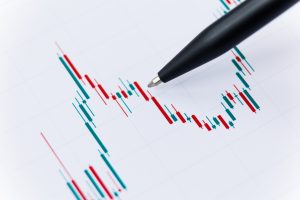Today, JPMorgan Chase continues to solidify its position as a titan of American finance, with Jamie Dimon’s leadership reinforcing its reputation as a financial powerhouse. The bank’s strategic moves and consistent performance have made it a symbol of stability and strength in the banking sector.
Over the past few years, JPMorgan Chase has experienced remarkable growth, positioning itself as the largest bank in the United States by assets and one of the most influential financial institutions globally. Under Jamie Dimon’s guidance, the bank has navigated various economic challenges, including the COVID-19 pandemic, interest rate fluctuations, and regulatory shifts, maintaining robust profitability and investor confidence.
Jamie Dimon, a prominent figure in American finance, has been at the helm of JPMorgan Chase since 2005. His leadership is often credited with steering the bank through turbulent times and establishing a resilient business model. The bank’s assets exceed $3.7 trillion, and its stock is consistently ranked among the top financial stocks by market capitalization, reflecting investor trust and market dominance.
As a result, JPMorgan Chase is often viewed as a “monument” to American financial strength—an institution that embodies the country’s economic resilience and competitive edge. Its influence extends beyond banking, impacting financial markets, corporate strategies, and regulatory policies across the globe.
Market analysts frequently highlight JPMorgan Chase’s diversified revenue streams, including consumer banking, corporate and investment banking, asset management, and treasury services. The bank’s investment banking division, led by seasoned professionals, continues to secure lucrative deals and mergers, further cementing its industry leadership.
Experts also note that JPMorgan Chase’s strategic investments in technology and cybersecurity have helped it stay ahead in an increasingly digital world. Initiatives like the development of advanced trading platforms and digital banking services are seen as critical to maintaining its competitive edge and customer loyalty.
Looking ahead, JPMorgan Chase’s future performance will likely depend on its ability to adapt to evolving regulatory environments, geopolitical risks, and technological innovations. The bank’s ongoing focus on sustainability and social responsibility initiatives also plays a role in shaping its long-term outlook.
In conclusion, JPMorgan Chase under Jamie Dimon remains a pillar of American finance, with its influence and stability making it a key benchmark for the industry. Its continued growth and strategic positioning will be closely watched by investors and competitors alike.
What is JPMorgan Chase’s current ranking among global banks?
According to the Global Finance Magazine, JPMorgan Chase is ranked as the largest bank in the world by market capitalization and total assets, reaffirming its dominance in the financial sector.
How has Jamie Dimon impacted JPMorgan Chase’s growth?
Jamie Dimon’s leadership has been pivotal in steering JPMorgan Chase through economic crises and regulatory changes, maintaining its status as a leading financial institution with consistent profits and innovative strategies.
What are the main risks facing JPMorgan Chase today?
The bank faces risks from regulatory changes, geopolitical tensions, and technological disruptions, which require continuous adaptation and strategic planning to manage effectively.







